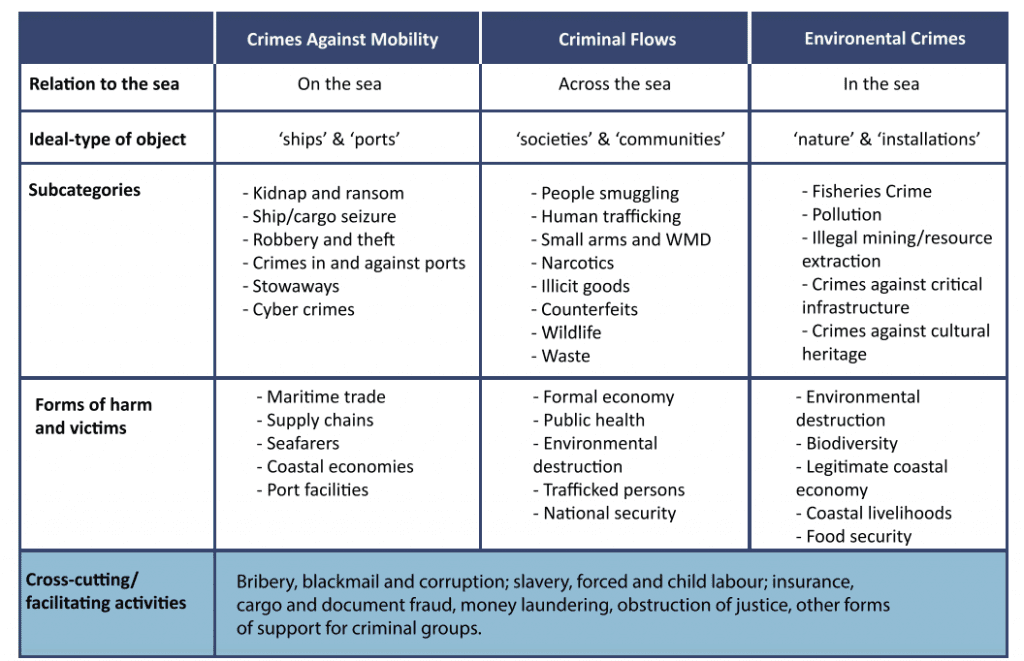SafeSeas Directors Christian Bueger and Tim Edmunds have released a new working paper ‘Blue Crime: Conceptualising transnational organised crime at sea’. A pre-print of an article accepted at Marine Policy, the paper proposes the concept of blue crime and provides a systematic conceptualisation of the term as well as a typology.
Click here for the working paper
Transnational organised crime at sea has only recently been recognised as a major security issue that requires political attention. Crimes such as maritime piracy, the illicit trafficking of people, narcotics, arms or waste by the sea, and environmental crimes such as illegal fishing or pollution are increasingly important dimensions of ocean governance and the associated maritime security and law enforcement agenda. Such crimes have different expressions across the world’s maritime regions and affect human lives, political stability and economic interests in different ways, ranging from their impact on coastal communities to international shipping and even national security.
There are significant debates and uncertainties, however, around the current usage of the term. These centre around the meaning, scope and reach of the concept including, what illicit activities it comprises, and how these can be meaningfully structured in ways that that both recognise the diverse nature of maritime crime yet also provide a basis for an integrated response to it.
The article addresses these uncertainties and contestations and develops a systematic categorisation of ‘blue crime’. Through this categorisation, the article identifies three core groups of blue crime: crimes against mobility, criminal flows, and environmental crimes.

Each crime entails a different relationship with the maritime space and produces differing pathologies of effect.
As such, the article addresses the debate that continues around the term transnational organised crime at sea and provides a new framework of ‘blue crimes’ for navigating this complex issue for practitioners and analysts alike. It achieves this by tracing the distinct characteristics of different blue crimes and identifying how they intersect through the skills and capacities required to carry them out, the spaces in which they take place, and the facilitating crimes related to them. Through this, the article considers what kinds of synergies can be built to respond to them.
Specifically, it highlights three consequences: First, it is clear that some forms of maritime crime are significantly better documented than others. Second, the paper implies that more work needs to be done to understand the ways in which different actors and organisations involved in the fight against maritime crime share information between each other, and more widely. Finally, it points to the importance of the governance and organisation of joined up responses to blue crimes, including capacity building as the international and regional governance systems are fragmented and lack integration.

2 thoughts on “Blue Crime: Conceptualising transnational organised crime at sea”